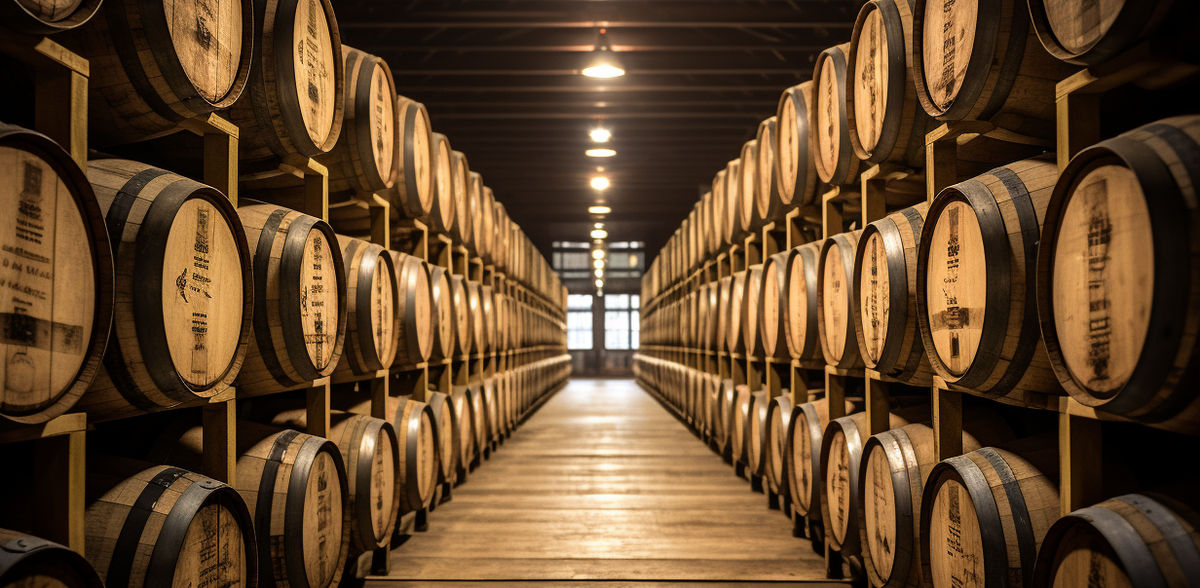As whiskey and bourbon business booms, beloved distillers face pushback over taxes and emissions
For decades, the whiskey and bourbon makers of Tennessee and Kentucky have been beloved in their communities. The distilleries where the liquor is manufactured and barrelhouses where it is aged have complemented the rural character of their neighborhoods, while providing jobs and the pride of a successful homegrown industry.

symbolic picture
computer generated picture
Now, the growing popularity of the industry around the world is fueling conflicts at home.
In Kentucky, where 95% of the world's bourbon is manufactured, counties are revolting after the legislature voted to phase out a barrel tax they have depended on to fund schools, roads and utilities. Local officials who donated land and spent millions on infrastructure to help bourbon makers now say those investments may never be recouped.
Neighbors in both states have been fighting industry expansion, even suing distillers. Complaints include a destructive black "whiskey fungus," the loss of prime farmland and liquor-themed tourist developments that are more Disneyland than distillery tour.
The love affair, it seems, is over.
"We've been their biggest advocates and they threw us under the bus," said Jerry Summers, a former executive with Jim Beam and the judge- executive for Bullitt County, essentially the county mayor.
Bullitt County has long depended on an annual barrel tax on aging whiskey, which brought in $3.8 million in 2021, Summers said. The majority goes to schools but the money also is used for services that support the county's Jim Beam and Four Roses plants, including a full-time fire department.
Many of the new barrelhouses are being built with industrial revenue bonds exempting them from property taxes for years or decades. The counties supported the property tax breaks because they expected to continue collecting the barrel tax. When the state legislature voted to phase it out earlier this year, after intense lobbying by the Kentucky Distillers' Association, county officials felt betrayed.
"Our industry was always a handshake agreement," Summers said. Now, those agreements are being broken.
Once the barrel tax sunsets in 2043, the distillers will pay no taxes at all to Bullitt on some warehouses. The county will still have to provide them with services, protect them and protect the surrounding community from them if anything goes wrong, Summers said.
"Where you have an alcohol-based plant that produces a hazardous material, you need emergency management, EMS, a sheriff's department," he said.
Democratic Gov. Andy Beshear, who signed the bill after passage by Kentucky's Republican-controlled legislature, said several industry compromises were vital to his support, while the bill will encourage investment.
"I know it was tough. You had an industry that supports so many jobs and calls Kentucky home. At the same time, you've got communities that have helped build that industry. I know there are, right now, probably some difficult feelings," Beshear said in a news conference.
Kentucky Distillers' Association President Eric Gregory noted the compromise bill creates a new excise tax to help fund school districts. Another tax helps fire and emergency management services, though it does not apply in all counties.
"Even with this relief, distilling remains Kentucky's highest taxed industry, paying $286 million in taxes each year," Gregory said in an email.
While the tax changes take place, whiskey is booming.
As a former Beam executive, Summers remembers a time when whiskey was a cheap, "bottom shelf" drink. With small batch products, the liquor slowly became cool. American whiskey revenues since 2003 have nearly quadrupled, reaching $5.1 billion last year, according to the Distilled Spirits Council of the United States. During the same period, the super premium segment rose more than 20-fold to $1.3 billion.
Now many of the most recognized brands are part of international beverage conglomerates. Jim Beam is owned by Japan-based Beam Suntory. Britain's Diageo owns Bulleit. Italy's Campari Group owns Wild Turkey.
In lobbying for the end of the tax, the distillers' group suggested the industry could leave Kentucky. Officials like Summers are calling that a bluff. He said Bullitt County does not want any new barrelhouses unless things change, and he is not alone.
Nelson County, home to Heaven Hill, Log Still and other Kentucky communities involved with the industry, recently approved a moratorium on new bourbon warehouse construction while the county updates zoning and permitting rules. Soon, any new projects will be required to seek citizen input and zoning board approval, Judge Executive Timothy Hutchins said.
"That got their attention, let's put it that way," Hutchins said. "Now, we're trying to kiss and make up." The county gets about $8.6 million a year from the barrel tax, he said.
In Tennessee's Lincoln County, Jack Daniel's recently was slapped with a stop-work order after neighbors sued over a huge unpermitted expansion. Since 2018, the company has built six 86,000-square-foot (7,989-square-meter) warehouses holding 66,000 barrels each on a 120-acre (48-hectare) property, according to the lawsuit.
Jack Daniel's has since retroactively received the proper approvals, but neighbors say their biggest complaint has not been addressed: A black fungus that feeds on the ethanol emitted as whiskey ages.
The "whiskey fungus" has been been a nuisance around liquor facilities for centuries, but the size and scope of the new barrelhouse complexes means much more ethanol is being released in a concentrated area. The fungus covers nearby homes and cars in a sooty black film, choking trees and shrubs.
When Pam Butler moved to Lincoln County 30 years ago, there were only two barrelhouses nearby, and she had "no issues."
"I had a white car and it stayed white. I had a white horse trailer and it stayed white. Then about five years ago, everything started looking grungy," Butler said.
Butler owns a small farm where she keeps horses adjacent to the Jack Daniel's property. She said her pasture land is not thriving as it should, many of her trees are dying and she has developed asthma. She doesn't know whether her illness is related to the fungus, but said she only started having symptoms in the past few years.
Butler and several other neighbors want Jack Daniel's to capture its ethanol emissions instead of releasing them into the neighborhood.
The company would not comment on the fungus but spokesman Svend Jansen provided a statement saying it "will continue to work hard to be a good partner to all members of our community."
"We recognize that there have been, at times, a small number of people who do not appreciate or value the growth of Tennessee Whiskey production in the areas where we operate," the statement said.
Back in Kentucky, famed author and agriculturalist Wendell Berry has another concern: local food security and the destruction of prime agricultural land.
"I've been working, going on 30 years, to develop a regional food economy for Louisville," Berry said.
"Cities like Louisville and Nashville are surrounded by fertile land that is well watered," but they are importing much of their food from California's Central Valley, he said. "I've spent my life arguing that this land is going to be needed by people who want something to eat."
Berry recently lost a fight with distiller Angel's Envy in Louisville over the development of a 1,200-acre (485-hectare) property adjacent to the farm where he grew up. Henry County approved the company's plans for a bourbon tourism complex there, complete with cabins, an amphitheater and a helipad.
Angel's Envy declined to comment.
Fred Minnick, who has written books on bourbon and judges world whiskey competitions, said it is an interesting time for the industry because bourbon has never been this popular.
"Bourbon was the good guy. Bourbon was loved by the state," he said of Kentucky. "It will be fascinating to see if bourbon remains a hero." (dpa)































































